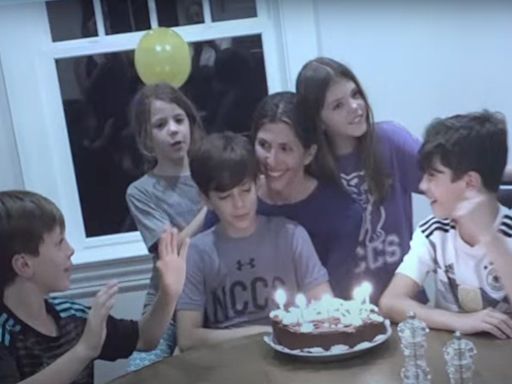Search results
Oct 31, 2023 · Mentally reviewing past scenarios to look for clues of being dead. Seeking reassurance from yourself or others. Asking a loved one: “Do you think I’m really alive?” or “How would we know if we were dead?” or repeating to yourself: “My heart is beating. I must be alive.”
- Overview
- The Difference Between Active Suicidal Ideation & Passive Suicidal Ideation
- What Do I Do When I Feel Like I Want to Die?
- How to Help Someone Else
Trending Videos
Information presented in this article may be triggering to some people. If you are having suicidal thoughts, contact the National Suicide Prevention Lifeline at 988 for support and assistance from a trained counselor. If you or a loved one are in immediate danger, call 911.
For more mental health resources, see our National Helpline Database.
988
If you've ever thought "I don't want to live like this, but I don't want to die"—you’re not alone. Major life stressors, childhood trauma, or untreated depression are all reasons that someone might feel this way.
This can be considered suicidal ideation, which means thinking about taking your own life. Nine percent of people experience suicidal ideation in their lifetimes, but only 14% of those make attempts. The rate of completed suicides is even lower—for every 31 attempts, there is only one completed attempt.
If you’ve decided you don’t want to live like this anymore, but you don’t want to die, it’s likely that you’re feeling passive suicidal ideation. This means that you’ve thought about not living anymore, but you don’t have any active plan to die by suicide.
However, passive suicidal ideation can quickly turn active (i.e., having a plan, means, and intent).
It’s important to remember that feeling suicidal is a state that can change rapidly.
— JANEL CUBBAGE, LCPC, LICENSED THERAPIST AND SUICIDOLOGIST
Therapy
If you are not already in some kind of mental health treatment, consider seeing a therapist who can help you work through these feelings and find out why it is that you feel like you can’t live like this. They can also help you identify coping tools you can use to keep yourself safe and reduce these feelings.
Get Help Now
We've tried, tested, and written unbiased reviews of the best online therapy programs, including Brightside, which specifically offers help for people experiencing suicidal ideation. Find out which option is the best for you.
Safety Planning
"Safety planning is an evidenced-based way to help prevent hospitalization and attempts,” says Cubbage. In research with suicidal patients in the emergency room, safety planning was associated with the patients being half as likely to exhibit future suicidal behavior and twice as likely to attend mental health treatment. Some key things to include on a safety plan include a list of coping strategies that have worked for you and sources of support. Sources of support can be friends and family as well as mental health professionals—either your therapist or a local mental health agency that you can contact. Mental health professionals sometimes use a tool called the "Reasons for Living Inventory" to assess for suicidality, but you might also want to look at it on your own to begin to jog your memory of reasons you want to live. Or you can make a list on your own—and nothing is too small to include. If you want to live because you love your morning coffee, that counts! Just as hopelessness can lead to feeling like you don’t want to live—but you don’t necessarily want to die—feelings of hope mean that there is a glimmer of light out there. In a study, those who identified more reasons for living were better able to access those reasons, even in periods of depression.
Janel Cubbage
Your natural instinct may be to remind them of the reasons they have for living or to tell them to think about their friends and family and how their death would affect them. Push those instincts to the side and listen to them. Hear them. Let them tell you what’s contributing to their emotional pain. — Janel Cubbage Of course, if someone is in imminent danger, contact emergency services or bring them to the nearest emergency department.
What This Means For You
We acknowledge how brave it is for you to realize that you don’t want to live like this anymore—and that you don’t want to die. A safety plan and a support network can help you through this crisis. How to Admit Yourself to a Psychiatric Hospital By Theodora Blanchfield, AMFT Theodora Blanchfield is an Associate Marriage and Family Therapist and mental health writer using her experiences to help others. She holds a master's degree in clinical psychology from Antioch University and is a board member of Still I Run, a non-profit for runners raising mental health awareness. Theodora has been published on sites including Women's Health, Bustle, Healthline, and more and quoted in sites including the New York Times, Shape, and Marie Claire.
If you know you are going to die soon you may want to visit places and do things you have only dreamed about. But you may also, possibly for the first time, think about God and whether there is life after death. You may worry about the pain of dying and want to deal with ‘unfinished business’ in your personal life.
This might include symptoms such as passively wishing you were dead, actively beginning to plan your death, or becoming absorbed in thoughts of dying. Preoccupation with death can be a symptom of depression and other mental illnesses. Here's why having a mental health condition can make you have these feelings and what you can do to address them.
Sep 13, 2023 · 1. You Struggle With Depression. Depression can cause a person to feel dead inside due to the debilitating effects it has on someone’s perception of themself and their purpose in life. One key aspect of depression is hopelessness. Feeling hopeless is a risk factor for many mental health conditions, not solely depression.
Mar 30, 2024 · By Ellen Anderson, Ph.D. March 30th, 2024. This provocative title caught my eye at the local bookstore several years ago. It is a practical workbook that functions as both an organizer and end-of-life planner.
Nov 13, 2023 · The meaning of feeling dead inside is to find it difficult to process emotions like happiness and sadness. When you feel "dead inside" feelings take on the same dull tone and are hard to appreciate no matter the situation. Feeling dead inside might cause life to seem like a boring event, one that has no purpose or end in sight.



